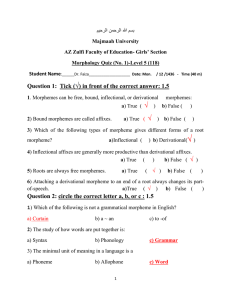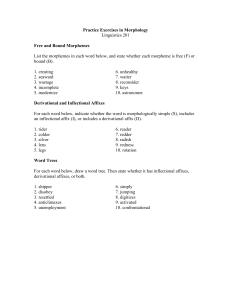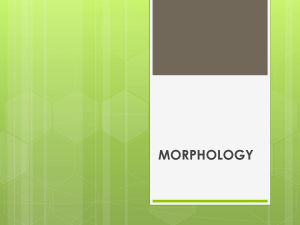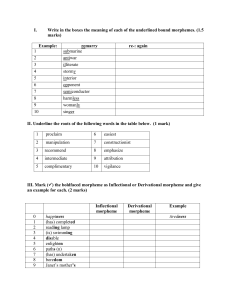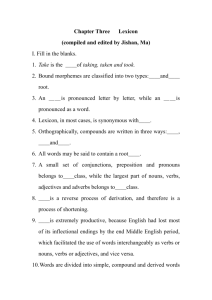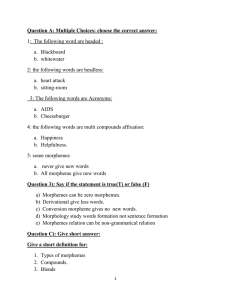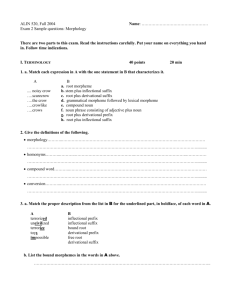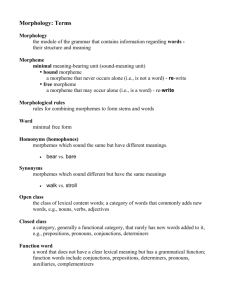Morphosyntax 1
advertisement
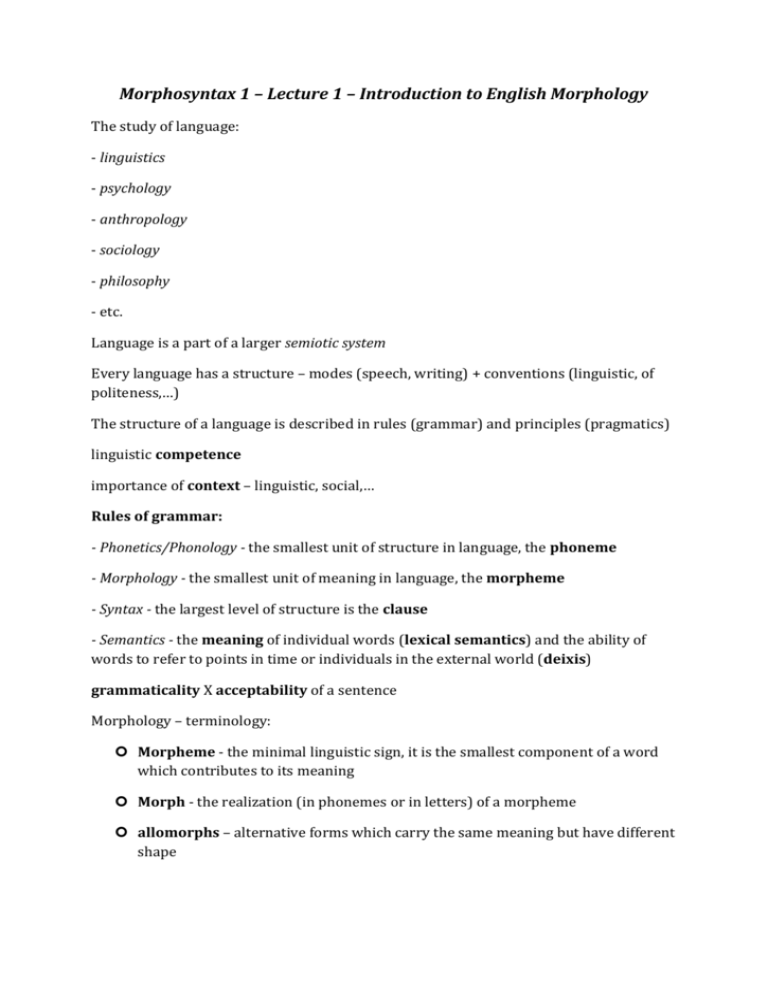
Morphosyntax 1 – Lecture 1 – Introduction to English Morphology The study of language: - linguistics - psychology - anthropology - sociology - philosophy - etc. Language is a part of a larger semiotic system Every language has a structure – modes (speech, writing) + conventions (linguistic, of politeness,…) The structure of a language is described in rules (grammar) and principles (pragmatics) linguistic competence importance of context – linguistic, social,… Rules of grammar: - Phonetics/Phonology - the smallest unit of structure in language, the phoneme - Morphology - the smallest unit of meaning in language, the morpheme - Syntax - the largest level of structure is the clause - Semantics - the meaning of individual words (lexical semantics) and the ability of words to refer to points in time or individuals in the external world (deixis) grammaticality X acceptability of a sentence Morphology – terminology: Morpheme - the minimal linguistic sign, it is the smallest component of a word which contributes to its meaning Morph - the realization (in phonemes or in letters) of a morpheme allomorphs – alternative forms which carry the same meaning but have different shape Classification of Morphemes: Free (root, base, stem) X Bound Bound - derivational (lexical) or inflectional (grammatical) - words can contain more than one base – compounds Some stems are rather bound than free: Clitic - syntactically independent objects that act as if they were morphologically or phonologically part of a neighboring word (collapsing together of common words): don’t, I’ll, what‘s Bound morphemes: inflectional - morphemes that indicate some kind of grammatical relationship - always a suffix derivational - can change the meaning of a word or its part of speech - a sufix or a prefix inflections in English: s – 3rd sg.; plural; possesive case ing – ing participle ed – past simple; past participle er – comparative form of Adj est – superlative form of Adj derivational morphemes – much larger class – see the file on affixes Productivity: - Inflections are highly productive - they can be regularly placed on any eligible base Eg: plural and possessive -s can be placed on any noun - Derivational affixes are much less productive - they cannot uniformly be attached to a potentially eligible base Eg: -able - highly productive to turn verb to adjective (catchable, walkable, hittable, touchable, sellable) But -th can be used on only a very small number of adjectives or verbs to create a noun (warmth, truth, growth X *coolth, *niceth, *smallth)


